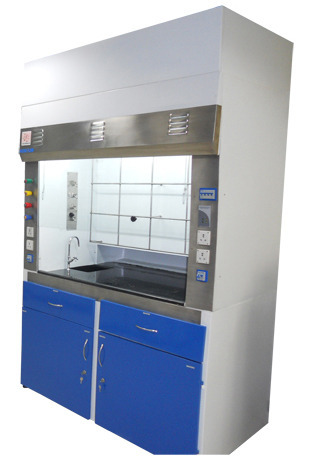- Garkheda Road , Aurangabad MS - 431005
- Time : Monday - Sat 09am - 6pm
- sushil@a2f-filters.com
- a2f Filters
Fume Hood For QC
Fume Hood For QC
Fume hoods are a primary method of exposure control in the laboratory. A fume hood is a ventilated enclosure that usually vents separately from the building’s heating, ventilation and air conditioning (HVAC) system and not recirculated into the building. Fume hoods should be used when working with toxic compounds or compounds with a boiling point below 120°C. Fume hoods, or other effective local ventilation, must be provided and used when the materials used will exceed exposure limits in the laboratory.
Standards for determining permissible exposure limits include:
• Occupational Safety and Health Administration Permissible Exposure Limits (OSHA PELs)
• National Institute for Occupational Safety and Health Recommended Exposure Limits (NIOSH RELs)
• American Conference of Governmental Industrial Hygienists threshold limit values (ACGIH TLVs®)
• American Industrial Hygiene Association Workplace Environmental Exposure Limits (AIHA WEELs)

Over the past 20 years, there has been an explosion of technology and information. The speed, volume and complexity of work have increased dramatically in the 21st century, and at a2f each one is prepared to work in this fast-paced and demanding environment. Most of our established habits for being productive were created and popularized nearly 20 years ago-and leave us prepared for the speed,volume and complexity of our work and our lives. When you turn to a2f for filtration solutions , you get more than just high -performance products. Sure, our innovative technologies , help to serve you with speed , volume , complexity and anything in filtration is available out of your demand . We combine global resources, unmatched technical expertise and a commitment to responding to your unique needs - making us the single-source supplier for any filtration, certification & testing application. Call us and see why industries prefer a2f products. Finally it' s what you don 't see that makes all the difference. We request you please guide us so that we may register our company with your organization . Awaiting for your reference in purchase for interaction . We look forward to be of service to you with best regards all the time we remain.
Fume Hood
Types of fume hoods at the University include chemical, radioisotope and perchloric acid hoods, with various airflow controls. Fume hood controls include constant air volume (CAV), variable air volume (VAV) and two-state (two speed) control. A number of older wood fume hoods and fume “cupboards” are still maintained. The hoods will display a label that identifies what type of ventilation control is employed: Fume hoods are categorized into one of two groups: 1) standard flow, and 2) low flow. Standard flow fume hoods are designed to operate at 100 linear feet per minute (LFM) at 18 inches sash height. (Note that some legacy hoods were designed to operate at 100 LFM at full sash height, as high as 25 inches). Low flow fume hoods are designed to operate at 70 LFM at 18 inches sash height.
The fume hood can provide adequate protection for most laboratory processes if it is used correctly. The fume hood must be operated with the sash no higher than the red arrow.
EH&S performs a functional performance test to assure hoods perform as required about every 18 months. The performance test typically includes an evaluation of the face velocity, the sound, containment, monitor performance and the tracking ability of a VAV (when applicable). EH&S may also note any observed problem with controls, sash, baffles, plumbing, light or corrosion. Fume hoods tested by EH&S will have a label that records its inspection history: The following definitions are used by EH&S to track the operational status of fume hoods. If a hood fails an inspection, it may need to be taken out of service until repaired. EH&S will notify the researchers and post a “Do Not Use” sign if repair is required. When UW Facilities has completed repairs, EH&S will retest the hood and put it back in service.

Our Products
- AIR SHOWERS
- DUST COLLECTORS
- DISPENSING SAMPLKNG BOOTH
- DEDUSTING BOOTH
- FILTER CLEANING BOOTH
- HANGING LAMINAR
- LAMIANR AIR FLOW STATION
- PASS BOX STATIC & DYNAMIC
- GARMENT CUBICAL DYNAMIC
- AIR CURTAINS
- RISER FILTER WITH PERFORATED
- SHEET & MAGNETIC LATCHES
- SCRUBBER & EXTRACTORS
- BIO HAZARD CABINET
- SANITARY HOUSING
- MULTI CANDLE HOUSINGS
- FUME HOOD FOR QC
- IPC CONTAINERS
- TERMINAL FILTER GRILL WITH
- RETURN RISERS
- HEPA BOX
- CAPSULE GRILLS
- FAN FILTER UNIT (FFU)
- DIFFUSER
- DAMPERS GRILLS
Quick contact
Get Solution
Organically grow the holistic world view of disruptive innovation via workplace diversity
Contact Us